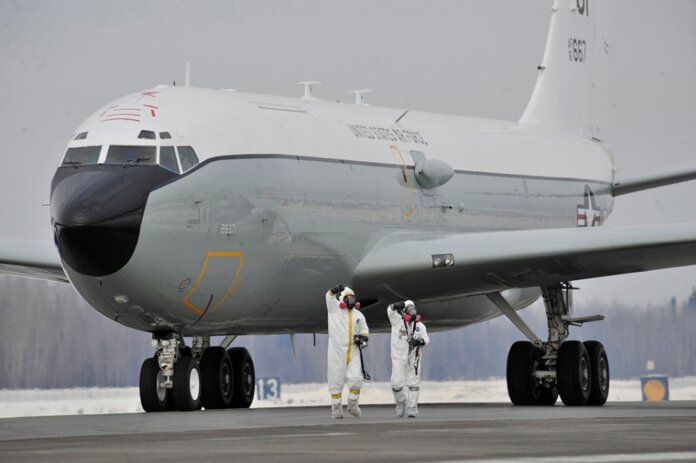United States President Joe Biden has continually asserted that NATO would not establish a no-fly zone over Ukraine.
However, wary of possible damage to Ukraine’s nuclear power plants and with a growing threat that Russian may resort to using chemical warfare, the US Air Force has deployed a Boeing WC-135W Constant Phoenix to Europe.
On 7 February, WC-135W 61-2667 using callsign ‘JAKE 21’ was observed on various publicly accessible flight trackers conducting a 14-hour round trip from RAF Mildenhall in England to the Eastern Mediterranean south of Cyprus. The same aircraft was again tracked over the Baltic Sea on the 22 February.
The WC-135W Constant Phoenix atmospheric collection aircraft supports national level consumers by collecting particulate and gaseous effluents and debris from accessible regions of the atmosphere in support of the Limited Nuclear Test Ban Treaty of 1963. The aircraft are Boeing C-135B Stratolifter platforms modified in the 1960s and equipped with an on-board atmospheric collection suite, that allows the mission crew to detect radioactive ‘clouds’ in real time. The aircraft have external flow-through devices to collect particulates on filter paper and a compressor system for whole air samples collected in holding spheres.
The WC-135W played a major role in tracking radioactive debris from the Soviet Union’s Chernobyl nuclear plant disaster in 1986, now taken by Russian forces earlier in the invasion, with technicians held as virtual hostages in order to keep the site monitored.
The flight crews are assigned to the 45th Reconnaissance Squadron at Offutt Air Force Base in Nebraska, and special equipment operators are assigned to Det. 1, Air Force Technical Applications Center at Offutt AFB.
The WC-135s are currently the only aircraft in the USAF inventory conducting air-sampling operations.
by David Oliver














